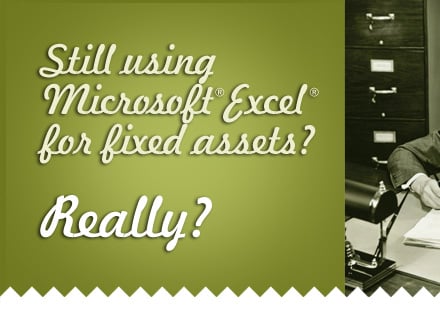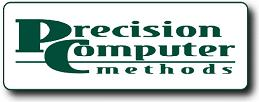Improved Inventory Management Solution for Sage 300
Read More_________________________________________________________
Tags: ACCPAC ERP, Sage 300 ERP, ACCPAC, Sage 300, ACCPAC | SAGE PRO | IT Consulting, Sage Accpac ERP, Sage 300cloud, Accpac for DOS, Predictive Planning for Inventory
Tags: Software Obsolescence | accounting systems | ERP S, ACCPAC ERP, ACCPAC, SAGE PRO, Sage 300, ERP software, xTuple | postbooks | Free Accounting Software, Accounting systems, Sage X3 ERP, Sage 50, upgrades, erp systems review, Sage 300cloud, SBT Accounting Systems, Accpac for DOS
Paperless document transfer
But the improved performance that EDI can bring usually requires that software integration with back end software already be in place, as well as the capability to translate outgoing invoices into the varied EDI formats that customers' systems might require. Both requirements can be difficult and intimidating for a small enterprise to successfully implement. Any software integration project can encounter unexpected pitfalls, and the sheer number of document formats and transport protocols that EDI supports adds complexity that can be both daunting and confusing.
Fortunately, the emergence of cloud and Software-as-a-Service providers means that small businesses and understaffed information technology departments have an alternative to pulling their hair out over EDI integration with their existing back end accounting software. A number of vendors offer managed and hosted EDI solutions with the EDI capability your business partners are asking you for, and to provide it in much less time, and with much less stress, than this might otherwise take.
Here are some of the most prominent vendors, and a quick look at some of their services:
Redtail Solutions has a managed cloud EDI solution that natively integrates with Microsoft, Sage and AccountMate software. Their 3PL Link product provides an electronic link from your accounting system to your third party fulfillment providers.
123 EDI has software, EDI Engine, that supports all versions of all standards for EDI software, and can translate XML and flat files as well. 123 EDI also offer both hosted and managed EDI. Their software accommodates many interfaces, for example Quickbooks, Peachtree, Sage, UPS, DHL and FedEx.
EDI Consulting Group offers many EDI software integration solutions tailored to specific tasks, such as FAX 2 EDI and PDF2EDI and EDI LINK, a bridge from EDI to your accounting software that generates sales orders from incoming customer purchase orders and translates outgoing invoices into EDI data formats. EDI Consulting supports all EDI formats including X-12, UN-EDIFACT, and XML. We do a lot of business with this EDI provider.
Which of these vendor is best for you? If your business needs EDI today, outsourced solutions may be the place at least to start. If you have the time available to map out and implement an organized and incremental roll-out, you may want to keep at least some of your EDI capability in-house, if your information technology department has the required capabilities.You may also want to bring fresh eyes in to analyse your EDI needs and capabilities. Call PC Methods Inc. at the number above and we will be happy to discuss your EDI requirements and potential designs for a solution that fits your business.
Tags: ACCPAC ERP, Accpac Pro, ERP systems, Sage Pro ERP, "EDI software"
|
Tags: ACCPAC ERP, Sage 300 ERP, Accpac Pro, Sage Pro ERP, ACCPAC | SAGE PRO | IT Consulting, Sage 300cloud
Improper methods of fixed assets reporting can lead to losses
Posted by Peter Heinicke on Wed, Apr 04, 2012 @ 02:30 PM
 Spreadsheets weren't designed for the potentially complex job of tracking and managing fixed assets. And that can mean BIG problems for your company:
Spreadsheets weren't designed for the potentially complex job of tracking and managing fixed assets. And that can mean BIG problems for your company:
Tags: ACCPAC ERP, asset tags, SAGE FAS, Depreciation, Fixed Assets
It’s well known that enterprise resource planning (ERP) software increases productivity and efficiency by integrating vital internal and external business functions.
And for many businesses, Sage Accpac is the ERP software of choice because of its ease of use, depth of functionality, adaptability to changing business environments, and scalability to manage growth.
However, the upfront IT costs of an in-house implementation of Accpac can be prohibitive, particularly for young, growing businesses. Fortunately, Accpac is available as an off-premises, hosted, Cloud solution—eliminating the need for expensive software and hardware investment.
Benefits of Sage Accpac
Sage Accpac helps disparate business functions coordinate to increase performance across the board. Working seamlessly with Windows XP, Vista, or Windows 7 and numerous databases (e.g. Pervasive, Oracle, MS SQL), Accpac synchronizes all information so that all employees in each functional area of your company are working together to achieve maximum efficiency.
Sage Accpac applications include:
- operations and distribution management
- accounting and financial management
- payroll management
- global operations management
- services and project management
- customer relationship management (Version 6 is integrated with Sage’s award-winning CRM solution.)
- human resource management.
Not only will Sage Accpac aggregate information and supply it to all stakeholders, it provides analytic tools to empower informed decision making at the rapid pace demanded in today’s fast-moving business environment. As a specific example, consider how instant integration of human resources, project management, and customer relationship management can allow you to provide more accurate project price quotes.
Another key benefit of Accpac on the Cloud is that—due to its “pay for what you use” model—it’s easily scalable as your company grows. That’s true even if you expand internationally, because the software works with numerous currencies and five languages.
Implementation Steps
Although the Cloud-based Accpac is relatively easy to put into operation, it pays to work with a Sage Certified ERP consulting and services firm that can help ensure you get the package you need and then educate your employees on how to get the most benefit from the software.
Your employees won’t have to be “techies” to effectively use Accpac if they receive the proper instruction, including in-person training, online help, user manuals, and procedure guidelines.
The Bottom Line
You can improve your company’s efficiency—and therefore its profitability—by linking together all the moving parts of your business with the top-rated Sage Accpac ERP solution. And with the Cloud version, there’s no need for the bulk of the expense to be incurred at the outset. You can benefit from using Accpac now—and as your business grows. Talk with an PC Methods about how you can take advantage of this opportunity. The latest version of Accpac is Sage 300 ERP.
Tags: Sage Accpac, Cloud Computing, ACCPAC ERP, Sage 300 ERP, ERP systems, quickbooks Pro
- Built in security, reliability & upgradeability
- Minimized risk involving application development and implementation
- Web-services integration
- Analytics, offline access and mobile deployment
- Speed application development
- Automated upgrades & real-time reporting
- Multiple languages and currencies
In conclusion, cloud computing is a viable option in today's business environments. Given more time there will certainly be more standards and assurance for the consumer. Our best advice would be to research potential vendors thoroughly, check references, start slow, and read your contract carefully. Additionally you'll want to determine how you plan on using the cloud and in what ways it will be the most beneficial to your organization.
Tags: Cloud Computing, St. Charles Cloud Computing, ACCPAC ERP, SAAS, SAGECRM.COM






-resized-600.jpg)

